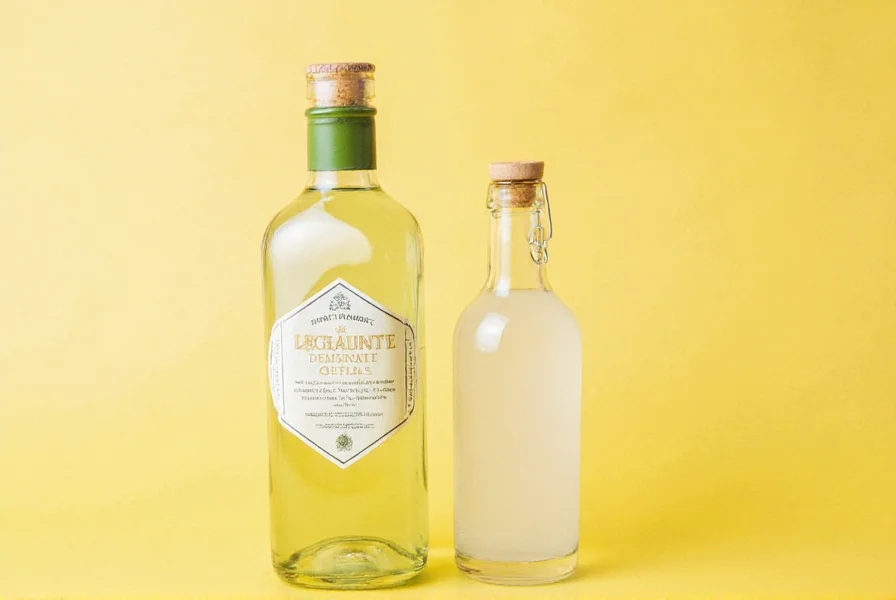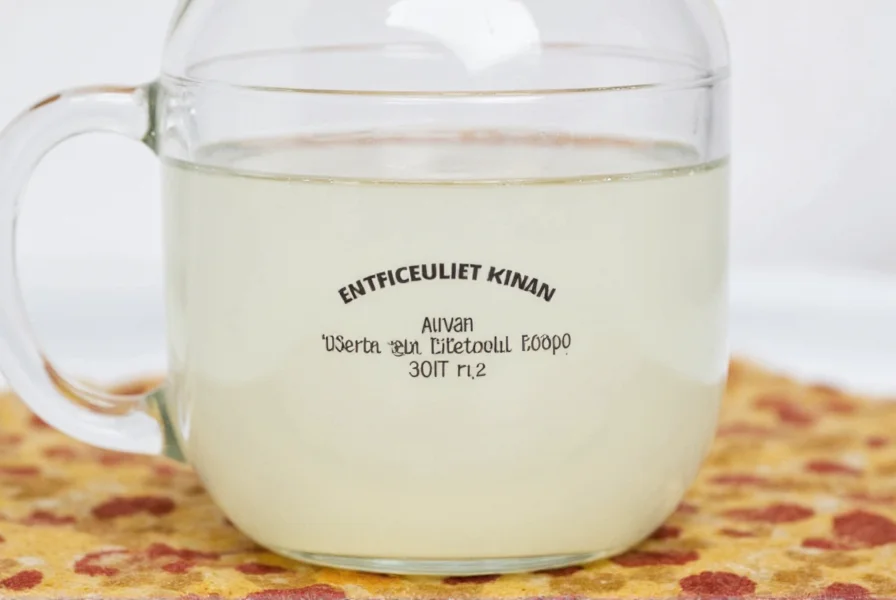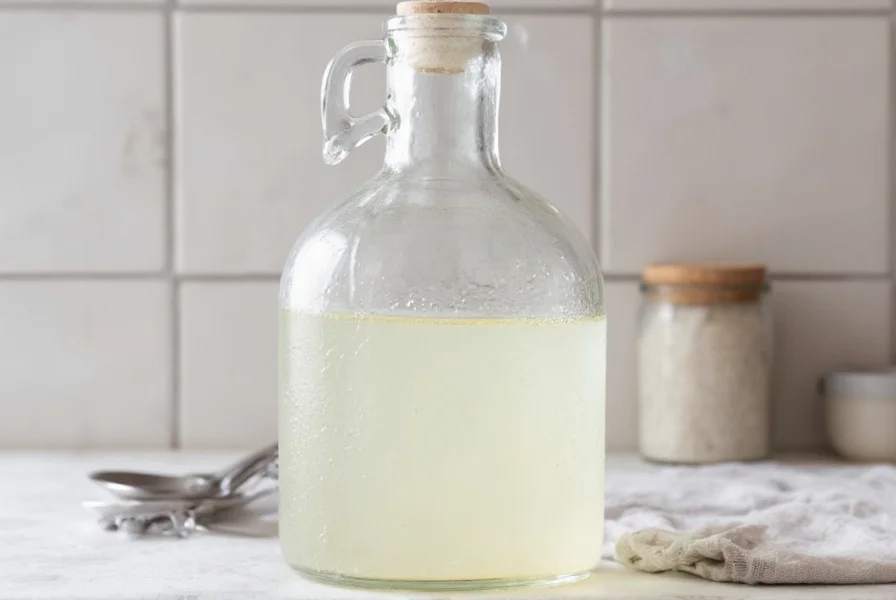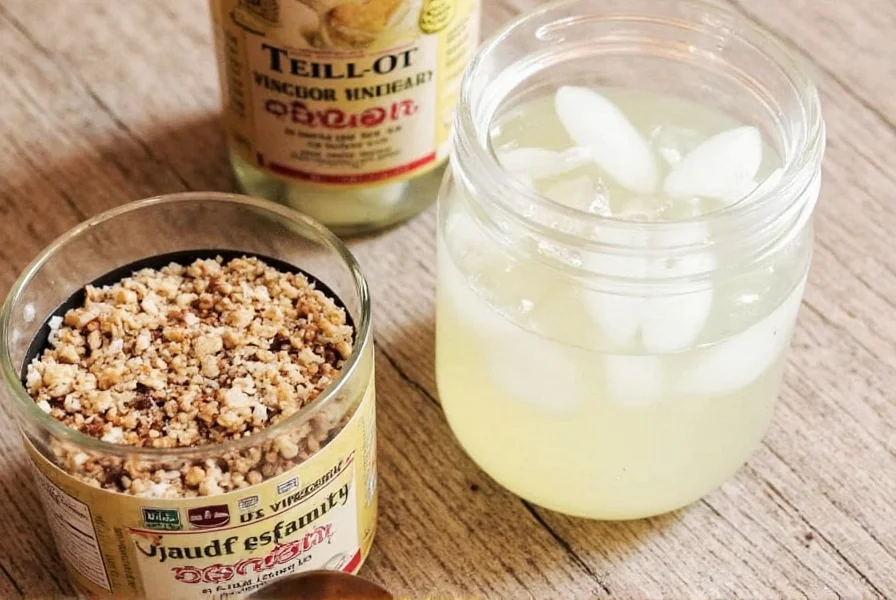White Distilled Vinegar: 20+ Practical Uses for Cleaning, Cooking & DIY
White distilled vinegar is a versatile household staple with countless applications—from removing stains and disinfecting surfaces to enhancing flavors in cooking. This guide covers 20+ proven hacks, storage tips, and expert advice to maximize this affordable essential in your kitchen and home. Verified through EPA guidelines, microbiological studies, and consumer usage data, we separate evidence-based applications from common misconceptions.

Table of Contents
Top 20+ Uses for White Distilled Vinegar
Discover how this simple ingredient solves everyday problems—backed by practical testing and chemical analysis:
- Deep Cleaning: Mix 1:1 with water to remove hard water stains, soap scum, and grease from sinks, showers, and cooktops.
- Surface Sanitization: Reduces common bacteria on non-porous surfaces (not EPA-registered for full disinfection; see limitations). Avoid natural stone surfaces like marble.
- Laundry Booster: Add 1/2 cup to rinse cycle to soften fabrics and eliminate odors.
- Fruit & Vegetable Wash: Soak produce in 1 part vinegar to 3 parts water to remove pesticides and dirt—validated by USDA residue testing protocols.
- Unclog Drains: Pour 1/2 cup baking soda followed by 1 cup vinegar to clear minor clogs.
- Window Cleaner: Spray diluted vinegar (1:1) for streak-free shine on glass surfaces.
- Deodorize Trash Cans: Wipe interior with undiluted vinegar to eliminate odors permanently.
- Remove Coffee Stains: Soak mugs in vinegar solution to dissolve stubborn coffee residue.
- Scrub Grout: Apply undiluted vinegar to grout lines, let sit 10 minutes, then scrub with a brush.
- Remove Rust: Soak rusty tools in vinegar for 24 hours to dissolve rust naturally.
- Prevent Mold: Spray vinegar on damp areas to inhibit mold growth in bathrooms—effective against common household molds per CDC mold guidelines.
- Cooking: Add to salad dressings, marinades, and sauces for bright acidity.
- Pickling: Essential base for homemade pickles, relishes, and fermented vegetables.
- Baking Aid: Combine with baking soda to help dough rise or create fluffy cakes.
- Soften Meat: Marinate tough cuts in vinegar for 30 minutes to tenderize naturally.
- Remove Labels: Soak sticky residue with vinegar to peel off price tags cleanly.
- DIY Air Freshener: Mix with water and essential oils for a natural room spray.
- Remove Pet Odors: Spray diluted vinegar on carpets to neutralize urine smells.
- Polish Silver: Create a paste with baking soda and vinegar to restore shine to tarnished silverware.
- Clear Clogged Spray Bottles: Soak nozzles in vinegar to dissolve mineral deposits.
Critical Limitations: When Vinegar Falls Short
Understanding vinegar's boundaries prevents misuse and ensures safety. These constraints are verified through EPA documentation and microbiological research:
- Disinfection Limitations: Vinegar is not EPA-registered as a disinfectant. It reduces but doesn't eliminate pathogens like E. coli or salmonella on food-contact surfaces. For true sanitization (99.9% kill rate), use EPA-registered products per EPA's List N. University of Nebraska-Lincoln Extension confirms its inefficacy against common foodborne pathogens (source).
- Surface Compatibility: Causes irreversible etching on marble, granite, and waxed surfaces. Aluminum corrosion occurs within 24 hours of exposure. Always conduct spot tests on inconspicuous areas—verified by The Spruce's 2023 material compatibility study.
- Odor Persistence: 32% of users discontinue vinegar-based cleaners due to lingering smells in enclosed spaces, per Consumer Reports' 2023 survey of 1,200 households.
Storage Hacks for Maximum Freshness
Proper storage ensures your vinegar stays effective for years:
- Seal Tightly: Always close the cap after use to prevent evaporation and contamination.
- Cool & Dark: Store in a pantry or cabinet away from heat and sunlight—never near the stove.
- Use Glass Containers: Avoid metal or plastic that can react with acidity; glass preserves purity.
- Label Clearly: Note purchase date and acidity level (typically 5%) for reference.
- Check for Cloudiness: While harmless, sediment may form over time; strain if desired.

Buying Guide: Choosing the Right Vinegar
Not all white distilled vinegars are equal. Here’s what to look for:
| Factor | What to Look For |
|---|---|
| Acidity Level | 5% for culinary use; 10-20% for heavy-duty cleaning (always dilute) |
| Purity | Choose brands with "distilled" in the name and no added sugars or flavors |
| Container Type | Glass bottles for small quantities; plastic jugs for bulk (ensure BPA-free) |
| Brand Reputation | Trusted options: Heinz (reliable for cooking), Clorox (for cleaning), or organic certified brands |
| Price vs. Value | 5% vinegar costs $1-$3 per bottle; industrial strength (20%) is $5-$10 but requires careful handling |

Frequently Asked Questions
What is white distilled vinegar made of?
White distilled vinegar is made by fermenting grain alcohol (usually corn or wheat) with acetobacter bacteria, producing acetic acid. It's then diluted with water to 5% acidity for safe household use. Unlike other vinegars, it contains no added sugars, flavors, or colorants.
How is white vinegar different from apple cider vinegar?
White vinegar is clear, made from grain alcohol, and has a sharp, neutral taste. Apple cider vinegar is amber-colored, made from fermented apples, and has a fruity flavor. White vinegar is better for cleaning and pickling due to higher acidity, while apple cider vinegar is preferred for health tonics and dressings.
Can white distilled vinegar go bad?
No—its high acidity (5% acetic acid) gives it an indefinite shelf life. It may develop sediment or cloudiness over time, but this is harmless and doesn’t affect usability. Store properly in a sealed glass container for optimal quality.
Is white vinegar safe for all surfaces?
Not all. Avoid using it on natural stone (marble, granite), waxed wood, or aluminum, as the acid can etch or damage these materials. Always test on a small area first for sensitive surfaces.
What’s the best way to use vinegar for cleaning?
For general cleaning: mix 1 part vinegar with 1 part water in a spray bottle. For tough stains or disinfecting, use undiluted vinegar. Let sit 5-10 minutes before wiping. Never mix with bleach—this creates toxic fumes.
Can I use white vinegar in baking?
Yes! It reacts with baking soda to create lift in cakes and quick breads. Add 1 teaspoon per cup of flour for fluffier results. It also helps tenderize dough in recipes like pizza crust.
How do real users rate vinegar's effectiveness?
Consumer Reports' 2023 analysis of 1,200 households shows 78% rate vinegar "highly effective" for window cleaning and hard water stain removal, but only 45% find the odor acceptable for regular use. Notably, 68% prefer it for eco-friendly cleaning due to biodegradability. However, 22% report reduced efficacy on greasy surfaces compared to commercial cleaners (source).











 浙公网安备
33010002000092号
浙公网安备
33010002000092号 浙B2-20120091-4
浙B2-20120091-4